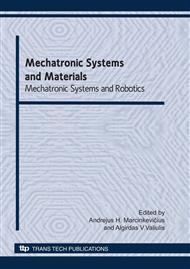[1]
A. Buchacz, S. Żółkiewski: Equations of motion of the two-link system vibrating transversally and longitudinally in transportation". International Conference of Machine-Building and Technosphere of the XXI Century. Sevastopol Vol. 4 (2006 ), pp.188-192.
Google Scholar
[2]
G. Genta: Dynamics of Rotating Systems. Springer, New York (2005).
Google Scholar
[3]
K. Jamroziak, M. Bocian: Identification of composite materials at high speed deformation with the use of degenerated model. Journal of Achievements in Materials and Manufacturing Engineering, Vol 28, Issue 2, International OCOSCO World Press, June (2008).
Google Scholar
[4]
M. Pasek: Frameworks hypergraphs as machines models. Doctorates thesis, Gliwice (1997) (in Polish).
Google Scholar
[5]
G. Szefer: Dynamics of elastic bodies in terms of plane frictional motion. Journal of Theoretical and Applied Mechanics, 2, 39, (2001).
Google Scholar
[6]
J. M. Vance: Rotordynamics of Turbomachinery. Willey (1988).
Google Scholar
[7]
S. Żółkiewski: Mathematical model of rotating damped flexible beam systems. XLVII Sympozjon PTMTS, Wisła (200, pp.231-232.
Google Scholar
[8]
S. Żółkiewski: Analysis and modelling of rotational systems with the Modyfit application. Journal of Achievements in Materials and Manufacturing Engineering vol. 30, issue 1, (2008), pp.59-66.
Google Scholar


